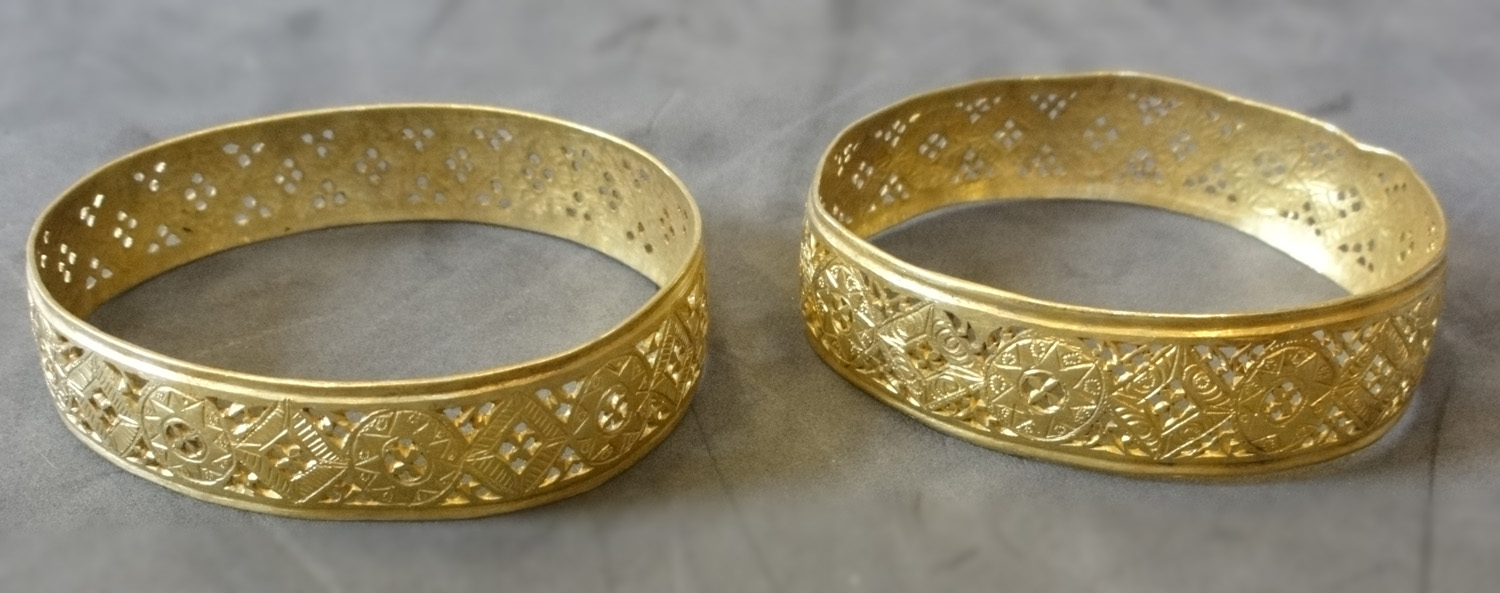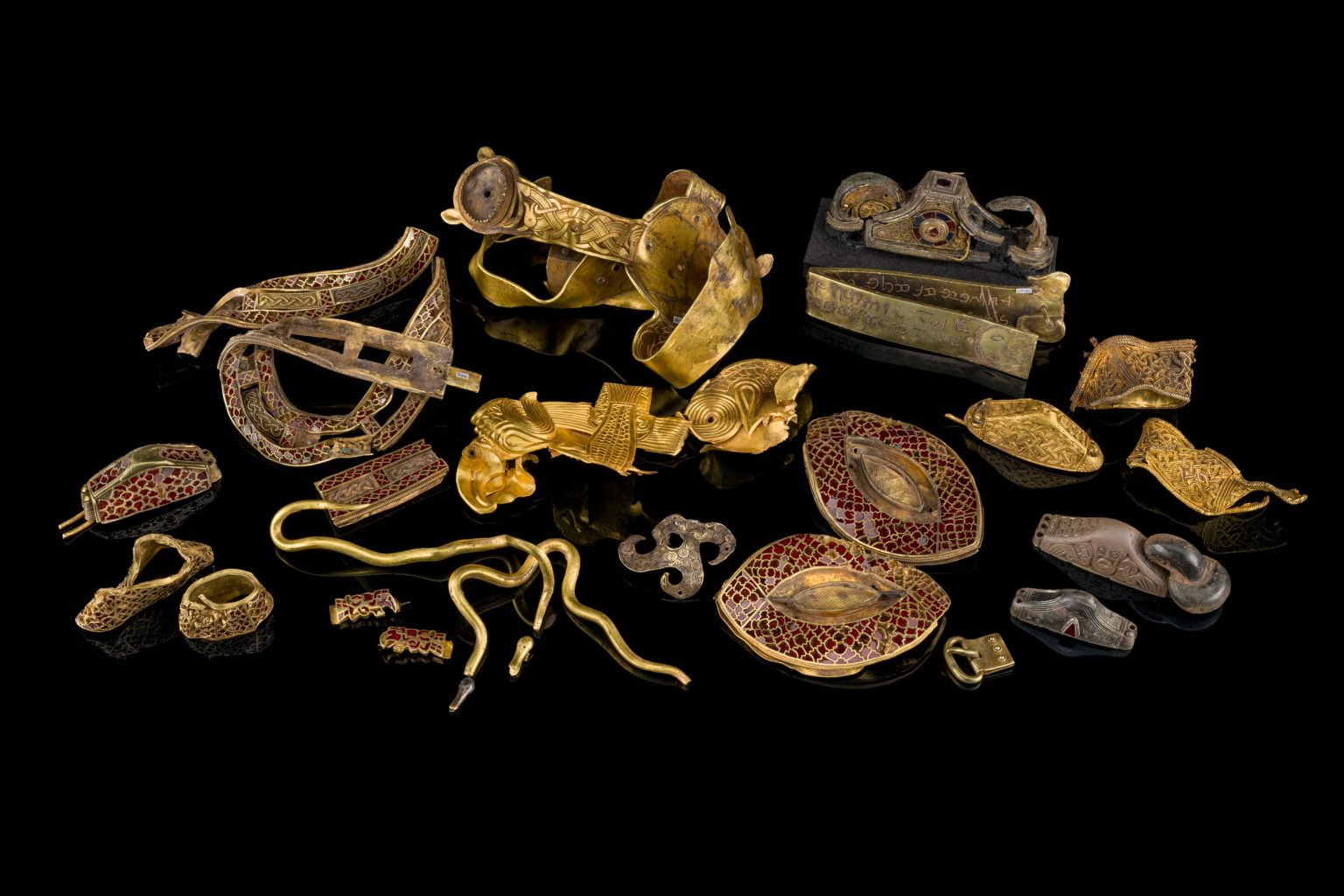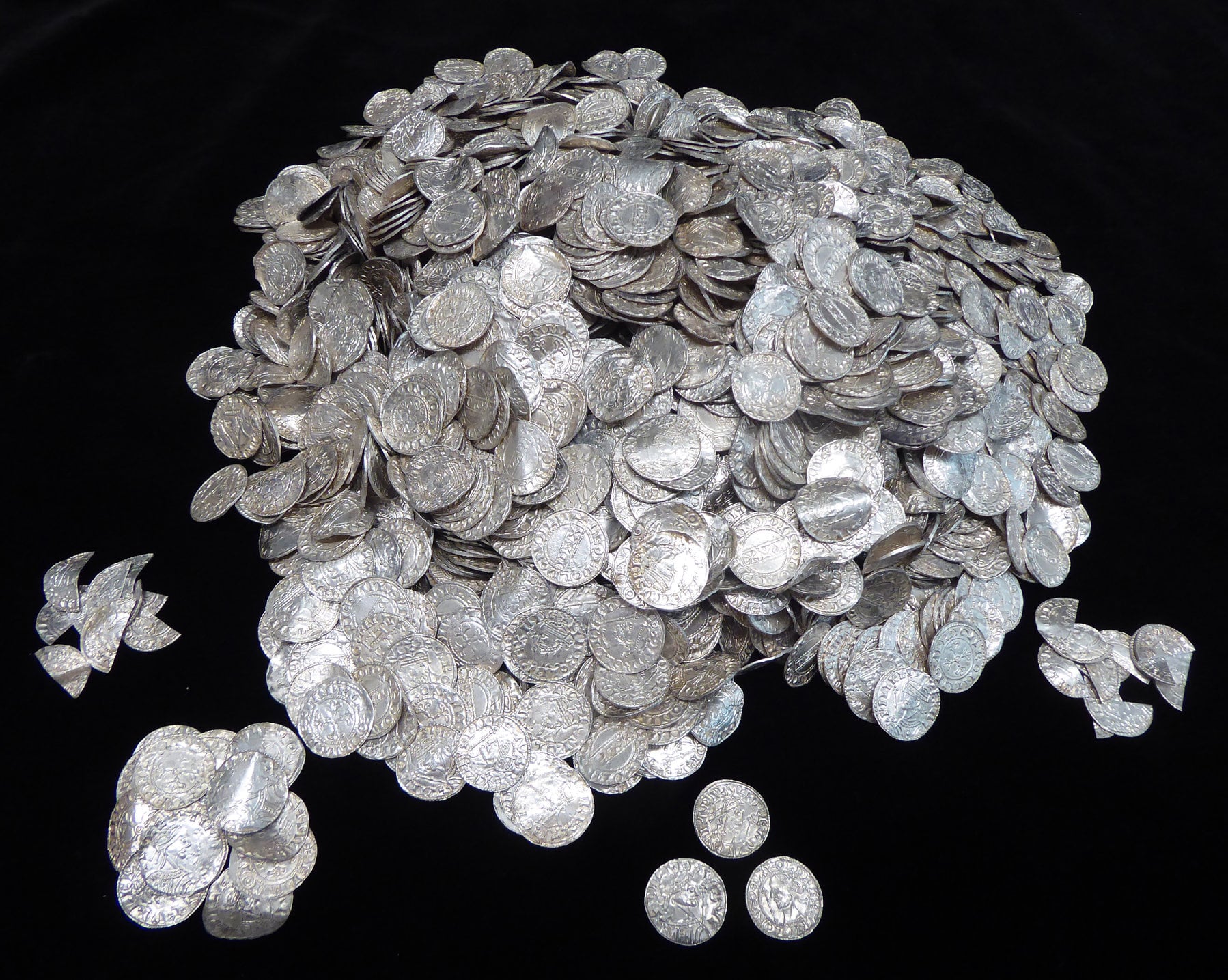
The most valuable finds when searching with metal detectors
Categories: Treasures
For many years now, detectorists around the world have been discovering treasures of national, European and even global significance. Often they are also interestingly "valued" financially. Particularly in England, Wales and Scotland, where finds are subject to the Crown and under certain conditions can bebe declared treasure and sold to museums, with the financial reward shared between the finder and the landowner. The detector discoveries listed below are some of the most valuable ever.
Hoxne Hoard
This legendary treasure was discovered by detectorist Eric Lawes in a field near the Suffolk village of Hoxon in 1992, when he was searching for a lost hammer for a well-known farmer with a metal detector he had received as a retirement gift from colleagues. In total, the hoard contained more than 15,000 Roman coins and over 200 pieces of gold and silver jewellery - such as A gold bracelet, silver spoons or rare silver peppercorns dating from the 4th century.
The coins in the hoard represent coins minted by many emperors. It is the largest hoard of Roman silver and gold discovered in Britain and the fourth largest Roman hoard in the world. It offers valuable insights into the economy, politics and social structure of the Roman Empire in the late 4th and early 5th centuries. The Hoxne Hoard was acquired by the British Museum for £1.75 million in 1993 and has since been extensively studied and exhibited to the public. Converted to today's pound value, the hoard would be worth about £4.5 million - just over £133 million.
For the record; although the Treasure Act did not exist at the time (it was not created until 4 years later), he did not even think to conceal the discovery, monetise it and decided to report it all to the authorities. Moreover, Eric divided the reward he received with the landowner exactly half fairly to everyone. Even though he didn't have to at the time.
 Hoxne Hoard - at the exhibition
Hoxne Hoard - at the exhibition
.jpg) Hoxne hoard - pepperworms (piperatoria)
Hoxne hoard - pepperworms (piperatoria)
 Hoxne hoard two gold bracelets
Hoxne hoard two gold bracelets
 Hoxne Hoard gold necklace
Hoxne Hoard gold necklace
 Hoxne Hoard - silver spoon
Hoxne Hoard - silver spoon
 Hoxne hoard - one of the treasure coins
Hoxne hoard - one of the treasure coins
 Hoxne hoard - one of the treasure coins other side
Hoxne hoard - one of the treasure coins other side
Staffordshire Hoard
Probably the most famous and certainly the greatest Anglo-Saxon hoard of all time was discovered by a detectorist called Terry Herbert in a field near Hammerwich in Staffordshire in July 2009. The hoard, which was most likely deposited between 650 and 675, contained nearly 4,600 items, mainly gold and silver ornaments, sword fittings and other weapons from the Anglo-Saxon era. The gold objects weighed over 5 kg, the silver 1.4 kg. About 3 500 pieces and jewellery were decorated with filigree, enamel and precious stones. They confirm the remarkable skill and craftsmanship of Anglo-Saxon metalworkers.
The artefacts of the hoard are almost all of a martial nature, with virtually no female jewellery. The assemblage contained many fragments of ornamental parts of swords, helmets and other military and personal equipment of the highest commanders. Following its discovery, the hoard was acquired by Birmingham and Stoke-on-Trent Museum with financial support from the National Heritage Memorial Fund and the Art Fund. The collection has since been very thoroughly researched, conserved and exhibited to the public worldwide. Its value today is around £4.7 million - approximately £140 million.
 Staffordshire Hoard - selected pieces of the hoard
Staffordshire Hoard - selected pieces of the hoard
 Staffordshire Hoard - Terry Herbert and a display of artefacts from his find
Staffordshire Hoard - Terry Herbert and a display of artefacts from his find
 Staffordshire Hoard - at Bimingham Museum
Staffordshire Hoard - at Bimingham Museum
 Staffordshire Hoard - gold handle fittings inlaid with garnets
Staffordshire Hoard - gold handle fittings inlaid with garnets
 Staffordshire Hoard - gold plate plaque
Staffordshire Hoard - gold plate plaque
 Staffordshire Hoard - helmet reconstruction
Staffordshire Hoard - helmet reconstruction
Chew Valley Hoard
A set of silver coins discovered in 2019 by detectorist Lisa Grace and her friend Adam Staples during a group detector event at Chew Valley in Somerset. The hoard consists of 2,558 coins from the late Anglo-Saxon and early Norman periods. They were deposited in a lead vessel in the late 11th century, around the time of the Norman conquest of England. Most of the coins were struck by King Harold II, who died at the famous Battle of Hastings in 1066. The set also included coins of Edward the Confessor and William the Conqueror.
The coins provide a unique insight into the period immediately after the Norman Conquest during a time of great political and social upheaval in England. The hoard is also remarkable for its excellent state of preservation, which has enabled experts to examine new and previously unknown mintages in detail. It contains twice as many issues of Harold II as previously known and five times as many issues of William I. The set is one of the greatest treasures of its kind ever discovered in the United Kingdom. Its current value is £5 million - about £150 million.
 Chew Valley Hoard - Lisa Grace and Adam Staple
Chew Valley Hoard - Lisa Grace and Adam Staple
 Chew Valley Hoard - some of the coins have been deliberately halved
Chew Valley Hoard - some of the coins have been deliberately halved
 Chew Valley Hoard
Chew Valley Hoard
 Chew Valley Hoard
Chew Valley Hoard
Roman Nemec
Sources: bbc.com, theguardian.com, medievalists.net, archaeology.co.uk
The article is included in categories:
Post
to zas bude teoretickejch hromadnejch úprků do zemí, kde zítra již znamená včera, tam, kde to pod korunou nesmrdí korunou 
- ale krásný věci se našly, to se musí nechat 
Británie je fakt tou historií totálně nacucaná. Nejvíc jim závidím Sasy a vikingy. Nádherný poklady! 
Pĕkné čtení díky a nádherný poklad 🤟 &-)








